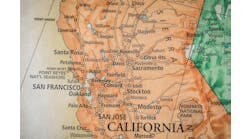A lot has been happening at the Austin-based Texas Health Services Authority (THSA), as that public-private-collaborative agency is moving forward on a number of fronts around health information exchange and interoperability across the state of Texas. Among the initiatives taking place include the ongoing advance of the use of both the EDEN (Emergency Department Encounter Notification) system, and the PULSE (Patient Unified Lookup System for Emergencies).
The Texas Health Services Authority (the Authority) was formed under Texas Health and Safety Code Chapter 182 for the purpose of promoting, implementing, and facilitating the secure electronic exchange of health information in the State of Texas. The Authority accomplishes this purpose through its state-level health information exchange (HIE) and privacy and security certification and supporting programs. It was created by the Texas Legislature through House Bill 1066 in 2007 as a public-private partnership, legally structured as a nonprofit corporation, to support improvement of the Texas health care system by promoting and coordinating health information exchange (HIE) and health information technology throughout the state. The THSA works under contract with the Texas Health and Human Services Commission (HHSC) to implement HIE strategic and operational plans for the State of Texas.
As part of its charge, THSA manages a statewide health information exchange network called “HIETexas.” This network includes the Emergency Department Encounter Notification (EDEN) system, which provides real-time notice of patient healthcare encounters from acute and post-acute facilities across Texas. These healthcare facilities send admit-discharge-transfer (ADT) messages in real-time, and EDEN routes the notification to providers with an established treatment relationship with the patient.
As the EDEN webpage on the THSA website explains, “EDEN provides real-time notice of patient health care encounters from acute and post-acute care facilities across Texas. These health care facilities send admit-discharge-transfer (ADT) messages in real-time and EDEN compares them to patient lists provided by subscribing health care organizations. When a listed patient receives care at a participating facility, subscribers receive an alert containing details about that patient’s health encounter.”
Meanwhile, THSA leaders are also advancing their work in preparing to leverage the federal PULSE (Patient Unified Lookup System for Emergencies) system, sponsored by the federal Office of the National Coordinator for Health IT (ONC).
The work leveraging these two systems speaks to the awareness on the part of THSA leaders and other leaders across Texas that healthcare must still be delivered even during natural disasters, and that among the most vulnerable patients are kidney dialysis patients, cancer patients, hospitalized patients, and those involved in transfers to and from skilled nursing facilities (SNFs). THSA leaders have been partnering with the leaders at the Baltimore-based Audacious Inquiry, a PointClickCare Company, who have helped them implement and optimize their use of EDEN and PULSE. Audacious Inquiry partners with a very wide range of entities, including hospitals and health systems, accountable care organizations (ACOs), health information exchanges (HIEs), health plans, and the federal government, and state governments, to support health data exchange and interoperability work nationwide.
Recently, Healthcare Innovation Editor-in-Chief Mark Hagland spoke with THSA CEO George Gooch regarding the organization’s forward movement in these various areas. Below are excerpts from that interview.
George, when did you take over the helm of THSA?
I became CEO in 2016 when my predecessor, Tony Gilman, our only previous CEO, left to join KPMG. In 2007, the Texas legislature created us to help run HIE and promote connectivity. It was actually created in response to Hurricane Katrina, which is almost 20 years ago already. At that time, we had no health information exchange capabilities, but a great need. Patients had no medication records, for example, after Hurricane Katrina. That’s what drove Texas to create the Texas Health Services Authority, as a complement to regional efforts. The interesting thing is that has now come full circle. What we were doing in the early days and bolstered by the HITECH Act in 2010, was really about trying to help a patient’s health information following them when they receive routine care.
Now, we have the PULSE patient-unified lookup system for emergencies, which leverages the HIEs—when they are meeting with a disaster responder individual. PULSE was piloted in 2014, a collaboration between Audacious Inquiry, state of California, and ONC, in response to wildfires.
Let’s also talk a bit about the broader landscape around interoperability. What are your thoughts on TEFCA right now?
My personal take is that TEFCA—the Trusted Exchange Framework and Common Agreement, you really have to think about the “TEF” and the “CA”—it was years in the making. And how entities will voluntarily exchange data on a voluntary basis, our national solution to interoperability—years in the making. They’ve developed the framework and the common agreement, calling for the recognized coordinating entity, the Sequoia Project—and then QHINs [qualified health information networks], and HIEs and health systems that plug into the QHINs. I think the most important letter in TEFCA is the “A”—the agreement. It’s voluntary. But they’ve created the tools for nationwide infrastructure for interoperability. And we’ve had privacy and security certification programs that have followed similar paths. And we really saw health plans pushing hospitals and HIEs to get certification to contract with them. We could see similar things happening with TEFCA. The tools were out there to do it, but who’s going to be the force behind it?
There’s a lot of speculation around the number of QHINs that are certified altogether, as the number of QHINs could affect their power and scope. What are your thoughts about that?
I can only comment on what we know publicly; we’re in the phase where entities are going to sign up to be QHINs. EHealth Exchange, Health Gorilla, CommonWell, and the Epic one, are among those—fewer than 10 have announced that they’re going to apply to be QHINs. There will likely be more. But a lot of those already have a presence at the national level: eHealthExchange already exists, and CarEquality participates in it. And those entities already cover so much of the healthcare population. It will be about making sure that no parts of the country are left out. The most interesting piece is Epic signing up to be a QHIN; that will be really big for health systems operating in different parts of the country not connected to a state or regional health exchange; this could get them plugged into a national network sooner rather than later. And PULSE is a node on the EHealthExchange network. So I do think that TEFCA is only going to make these things more effective.
What about the somewhat separate universe of Epic and its customer organizations?
It’s an interesting dynamic, it’s really more human nature than anything. We have Google Fiber here in Austin, we were one of the pilot sites for it, for Internet connectivity. And if you already have all the bells and whistles of super-fast Internet, you’re already getting robust services; and I think that’s where Epic is an analogy. If there’s already a lot of Epic in a market and they have CarEverywehre, it will be an upsell to add services around data exchange. And then there’s the inverse where maybe there was a lot of regional and/or state activity before a lot of hospitals started adopting Epic.
Back to Texas, you used Audacious Inquiry to support notifications during Hurricane Ida?
In 2020, we built and developed and had PULSE ready to deploy in the field. In the past few years, it’s been really bad news in Louisiana in terms of hurricanes. Since PULSE has been developed, we have not been hit with a storm that requires people to go to alternate care sites. But we are using PULSE, instead of it just being directly part of our Department of State Health Services, using their disaster response volunteer support database, we recognize that these entities are ever-changing. So we align our resources with such entities as American Red Cross and BCFS (formerly Baptist Children and Family Services), in terms of disaster relief. BCFS was our first administrator organization that we used to help bring on end-users for the PULSE system here in Texas. It’s disaster relief volunteers. They just needed access to electronic record system, and PULSE provided that. So when Hurricane Ida hit Louisiana, we got a call from our contact at BCFS; they were about to deploy in four alternate care sites in Louisiana, and they wanted to use PULSE. And we said, of course.
This is a program in Texas funded through Medicaid and CMS [the Centers for Medicare and Medicaid Services], and we partner with the Department of State Health Services. And we went to them and said, there’s nothing in contracts saying we can’t do this; and within a 12-hour period, we had approval to do it. So we went about configuring PULSE for it. It’s a node on EHealthExchange. PULSE is already pre-configured for the states surrounding Texas, partly because we could have disasters in neighboring states with people sheltering here in Texas. So we configured it so that anyone seeking care at alternate sites in Louisiana, could make use of PULSE. It was a great success. TSHA and Audacious Inquiry really helped us configure the system, and so it was our first practice run from an administrative standpoint; and we’re anticipating a very active hurricane season here in Texas, so we’ll be able to use PULSE and also the Emergency Census, a tool within PULSE that supports family reunification. And it leverages EDEN, the Emergency Department Encounter Notification System.
What do the next couple of years look like for you and your team at THSA?
This year, we anticipate deploying PULSE, using PULSE and the Emergency Response System, to help response to disasters. We continue to build out PULSE and the EDEN system. And TEFCA is only going to bolster those interoperability efforts nationwide. And PULSE being a node on the EHealthNetwork nationwide. The goal is for patient health information to be available at the right time and in the right place—both in traditional healthcare and also—PULSE is designed to bring electronic support to environments that don’t have it. So all the efforts around CURES [the 21st Century CURES Act], TEFCA, and so on, will only move forward.
Is there anything that you’d like to add, on the future of interoperability more generally?
I think that we’ve seen a lot of development of interoperability over the last several years. What gets a lot of attention is where we haven’t yet solved for interoperability, for example, every time a patient goes to a doctor’s office and records aren’t yet available. A lot of what we’re headed towards under 21st Century CURES and TEFCA, we’ll drive towards a more unified nationwide approach to interoperability. I think that CCDs will become more and more commoditized, and there will be value-added services added on top. But it’s all good news. The biggest challenge simply involves the amount of time and effort involved to get there; but we’re all here for that, at THSA.


